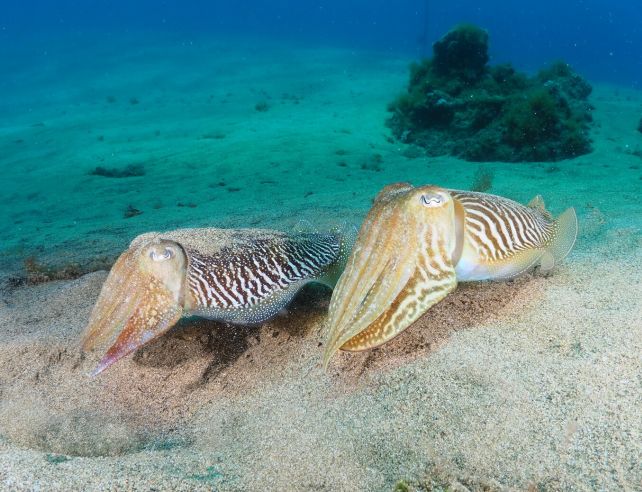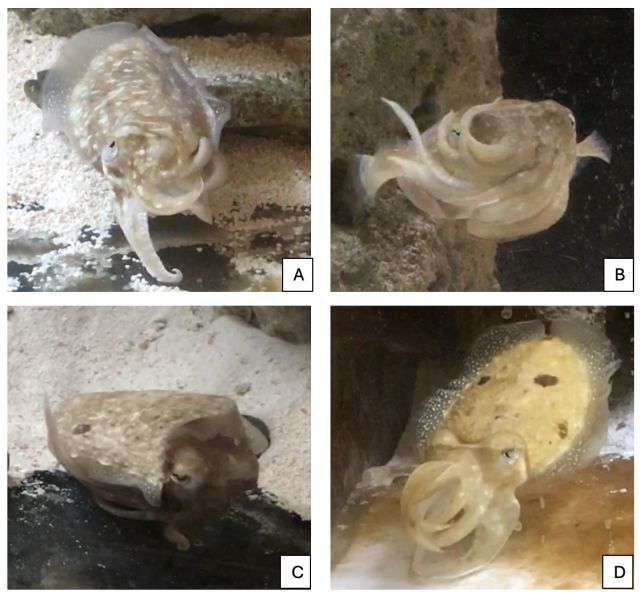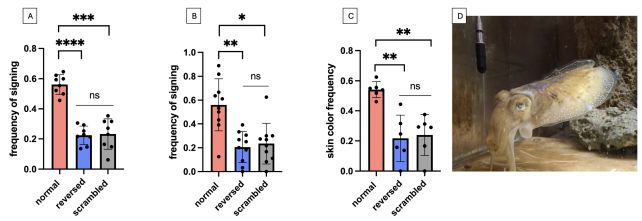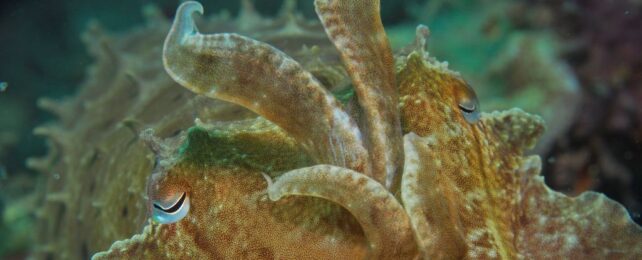Cuttlefish are strange animals with some strange means of communication. Now, these cephalopods have been recorded using their arms in a way that looks like they are gesturing to each other – adding a potentially previously unknown form of communication to their toolkit.
What's even more interesting is that these arm gestures could be multimodal signals that the cuttlefish receive not just visually, but by touch as well. It suggests that the full range of cuttlefish communication involves multiple senses.
The research, conducted by neuroscientists Sophie Cohen-Bodénès of the École Normale Supérieure (ENS) in France and Washington University in St Louis, and Peter Neri of ENS and the Italian Institute of Technology, is available on the preprint server bioRxiv.

Cuttlefish are some of the most fascinating creatures on the planet. Like other cephalopods, they show signs of a powerful intelligence lurking behind their peculiar eyes. They are able to pass cognitive tests designed for humans, they can exercise restraint, their memories are extremely long and sharp, but they can also develop false memories like humans do. They even appear to undergo an REM sleep phase.
So it wouldn't be all that surprising if their communication strategies were likewise complex. We know that they use their remarkable color-changing abilities to flash patterns and polarized light at each other, decoded in ways we can't imagine with their strange, strange eyes. They can communicate chemically, and, although they don't have ears, can sense and respond to vibrations in the water.
The eight arms and two tentacles that cuttlefish have at the front of their face are highly mobile and dextrous, used for swimming, hunting, foraging, and mimicry. Cohen-Bodénès and Neri wanted to discover whether they deliberately use their arms to communicate, and how they do so.

"In addition to the well-known extraordinary changes in visual appearance they can generate at the level of their mantle, cuttlefish can produce various body configurations combining chromatic, postural, and locomotion patterns, both for camouflaging and communication," they write in their paper.
"We introduce a previously undescribed communication display in two cuttlefish species: Sepia officinalis and Sepia bandensis. The four 'arm wave signs' are stereotyped arm movements consisting of long-lasting, expressive, and repeated sequences of undulations of the arms, which can be combined and expressed following specific patterns."
The research was conducted on cuttlefish of the species S. officinalis (common cuttlefish) and S. bandensis (dwarf cuttlefish), whose eggs were collected in the Atlantic and Indo-Pacific Oceans, respectively, then incubated and raised in a laboratory.
Eight adult common and 10 juvenile dwarf cuttlefish were subjected to a visual test. The researchers recorded the cuttlefish in their tanks, capturing videos of the animals spontaneously making signs with their arms.

They noted four distinct types of signs: Up, in which the arms were raised straight up; side, in which the cuttlefish moved their arms to one side; roll, with the arms rolling completely under the head; and crown, where the arms were arranged into a symmetrical split configuration.
These videos were played back to the cuttlefish, either right-way-up or upside-down. The cuttlefish responded more often to the right-side-up videos, usually returning the gesture displayed.
For the mechanosensory test, eight adult common and eight juvenile dwarf cuttlefish were tested. The researchers had used a hydrophone to record the vibrations in the water when spontaneous gestures were made. The researchers created several patterns based on these recordings, including scrambled and backwards versions.
These vibrations were then generated in the tanks of the test subjects, using a hydrophone or a subwoofer. Interestingly, the cuttlefish waved back at the vibrations. They did so more reliably when the vibrations were replicated exactly, while the scrambled and backwards versions elicited rarer responses.

All responses also came with some variation in the cuttlefish's color, too. All this seems to point to a communication strategy, but what they are communicating is still a mystery. It could be a dominance display; but often smaller cuttlefish make them towards larger ones, so that doesn't seem quite right.
Courtship also doesn't quite fit, since juveniles make the gestures too. It could be defensive, or have something to do with hunting. The gestures may even be an expression of mood, the researchers say.
"It is clear that the issue of interpreting the potential meaning of these signs is complex and unlikely to yield a simple answer," they write in their paper.
"Based on the above considerations, we believe the most plausible interpretation is that these signs carry a variety of possible meanings/functions depending on the associated behavioral contexts."
We're going to need a bigger science.
The research has not yet been peer-reviewed, and is available on bioRxiv.
